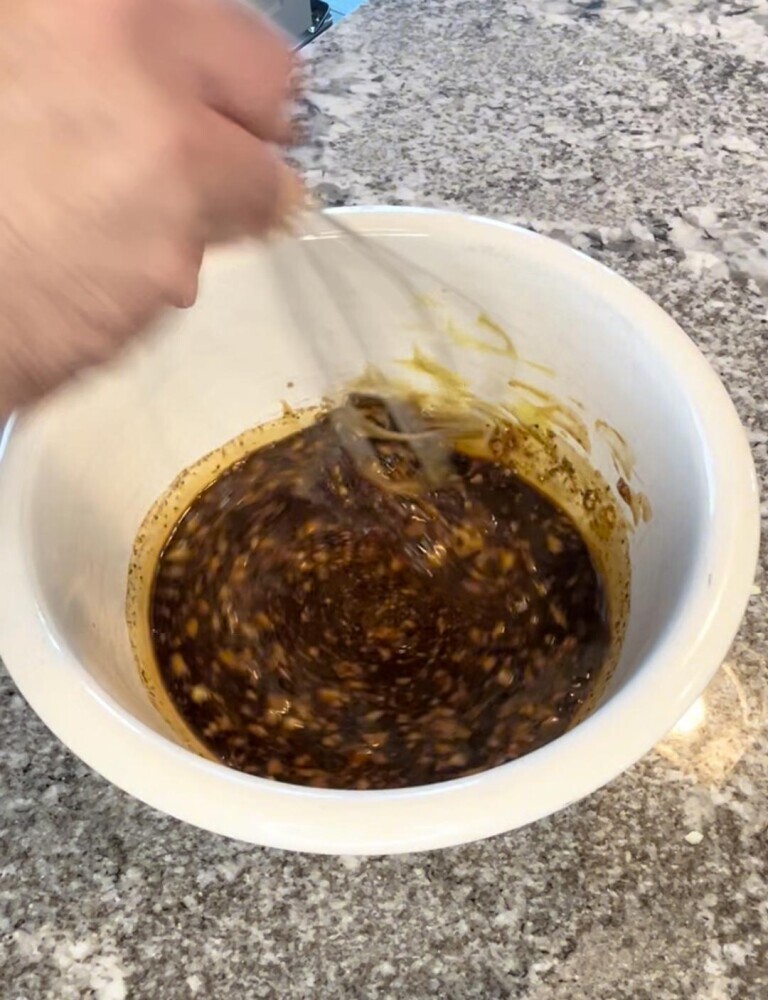The Best Pork Marinade
***Jump to Recipe***

Marinades have been a kitchen staple long before we even kept records—really! This age-old technique originated not just to make our taste buds happy but out of necessity. Back in the day, marinating was all about preserving meat and fish without refrigeration. People stumbled upon the magic of saltwater or acidic liquids, which acted like a natural fridge back then.
Different cultures around the globe embraced marinades in their unique styles. For instance, Eastern Europe uses a concoction of vinegar and spices to preserve meats through cold winters. Meanwhile, in Southeast Asia, coconut milk and lime took center stage, showcasing how local ingredients played a big role in crafting marinades.
Today, the emphasis has shifted from mere preservation to enhancing the dining experience. Marinades aren’t just about keeping food edible—it’s about turning meat into mouth-watering delights. They’ve evolved through the ages, incorporating a variety of spices, sweeteners, and oils to turn simple cuts of pork into something reminiscent of a feast. When you marinate, you’re dipping into a rich past that flavors your present.
Why Marinating Enhances Pork: Beyond Flavor Transformation
Marinating pork isn’t just about getting that awesome taste—it actually changes the meat in ways you might not expect. So, what’s the secret behind this transformation? It’s all about science! When you soak pork in a marinade, you help the meat retain moisture, making every bite juicy and tender. This isn’t just good news for your taste buds; it means the pork cooks more evenly too.
Flavor isn’t just something you sprinkle or brush on at the end. A good marinade seeps right into the pork, infusing it with deep, complex flavors. Imagine biting into pork that boasts layers of taste, from tangy to sweet and even a bit spicy, depending on your ingredients. Marinades can create an aromatic experience that comes alive with every bite, really taking the dining experience a notch higher.
Aside from making pork taste amazing, marinating has some cool health-related perks. For one, it can help keep nutrients in the meat that might otherwise be lost during cooking. Not to mention, marinating can break down harmful compounds that form during grilling, offering a healthier meal with enhanced nutrition. It’s like hitting multiple birds with one stone—better taste, texture, and health!
Key Marinade Components for Pork: Unlocking Protein Breakdown
When it comes to getting that pork perfectly tender and juicy, the ingredients in your marinade play big roles. Acids like citrus juice, vinegar, and wine are the front-runners. They help breakdown muscle fibers, making the pork softer and more receptive to soaking up flavors. A squeeze of lemon or a splash of apple cider vinegar adds zest and works its magic on proteins during the marination process.
Then there’s the fruit squad—pineapple, papaya, and kiwi. These fruits contain enzymes that are almost like tiny kitchen ninjas, going to work on the proteins to bring out the tenderness. Just be careful not to leave these enzymes working overtime; too much exposure can make the texture a bit mushy.
No marinade is complete without a balance of oils, herbs, and spices. Oils like olive or sesame prevent the pork from drying out and help herbs and spices to stick, allowing everything from garlic to thyme or even a kick of chili pepper to do their jobs. This mixture of fats and flavors brings the taste and texture together, creating the ultimate marination harmony.
Ingredients
- 1/3 cup low sodium soy sauce
- 2 1/2 Tablespoons brown sugar
- 2 1/2 Tablespoons Worcestershire sauce
- 1 1/2 Tablespoons Dijon Mustard
- 3 garlic cloves minced
- 1 teaspoon black pepper
Instructions
- Combine all ingredients
- Place up to 4 pork loin steaks or small pork chops, or 2 pork shoulder blade steaks in a sealable bag
- Pour marinade in back and allow to marinate at least 1 hour. For tougher cuts of pork such as pork loin, marinate longer or even overnight before grilling.
- Double marinate if using marinating more meat than stated in #2
